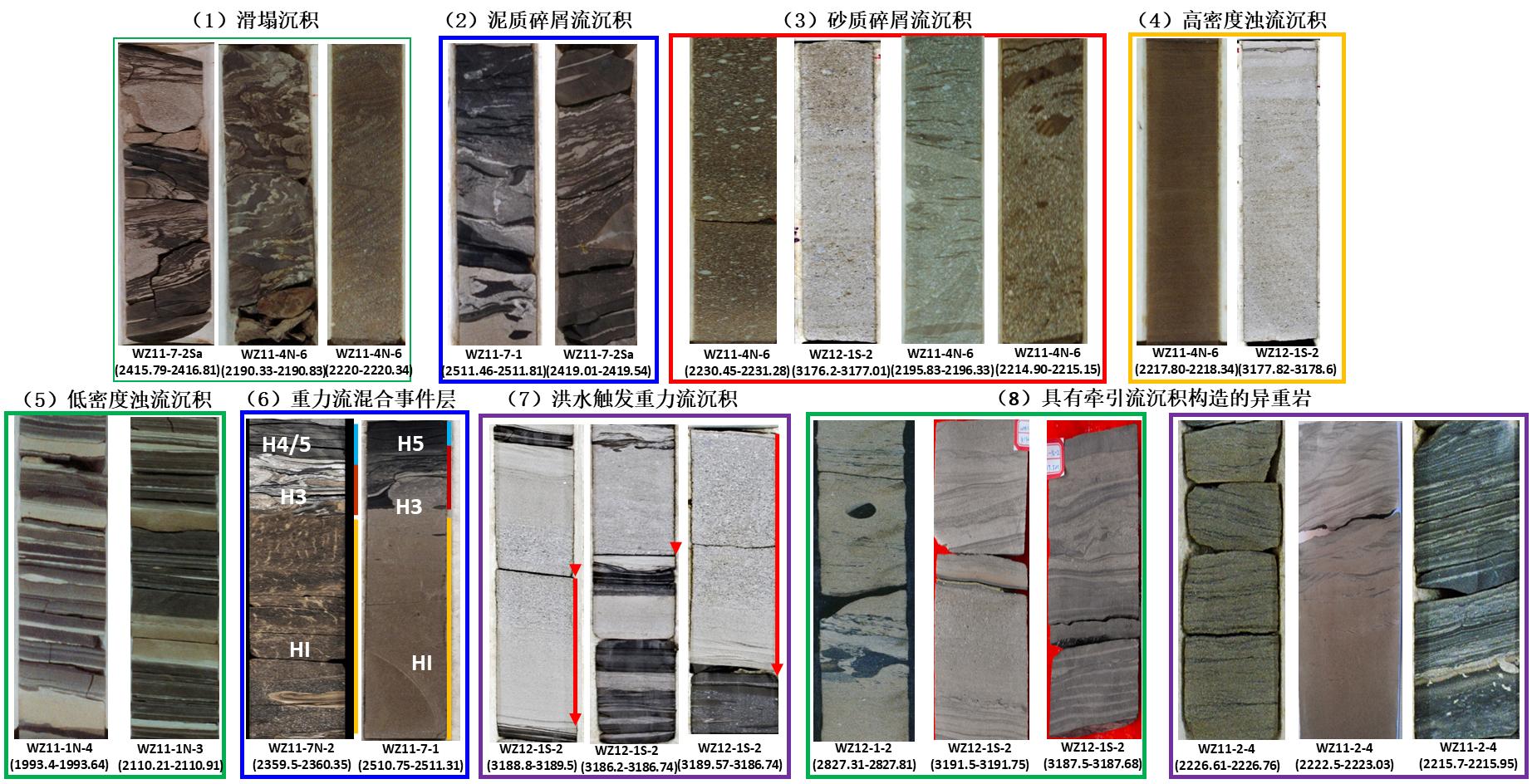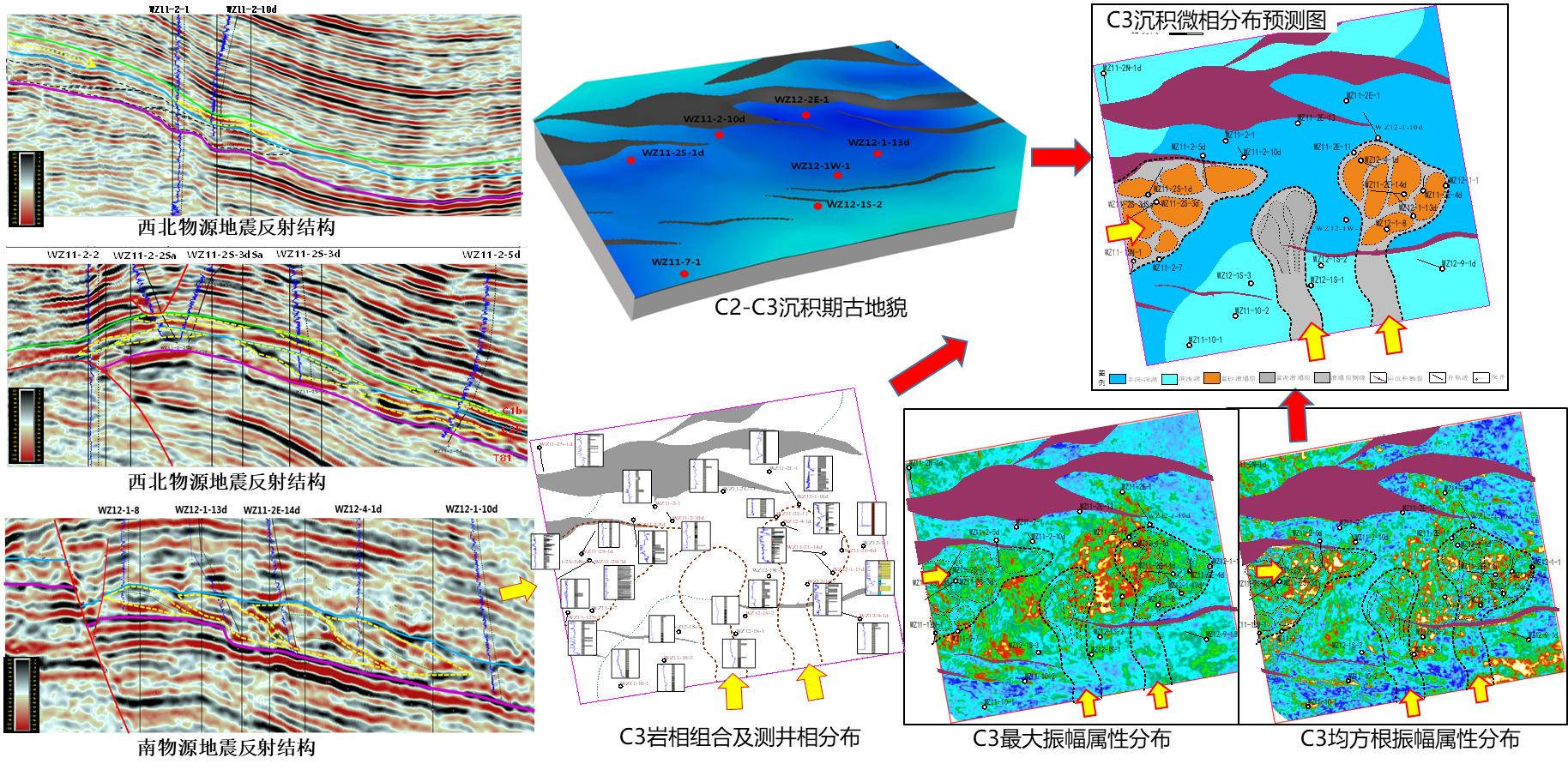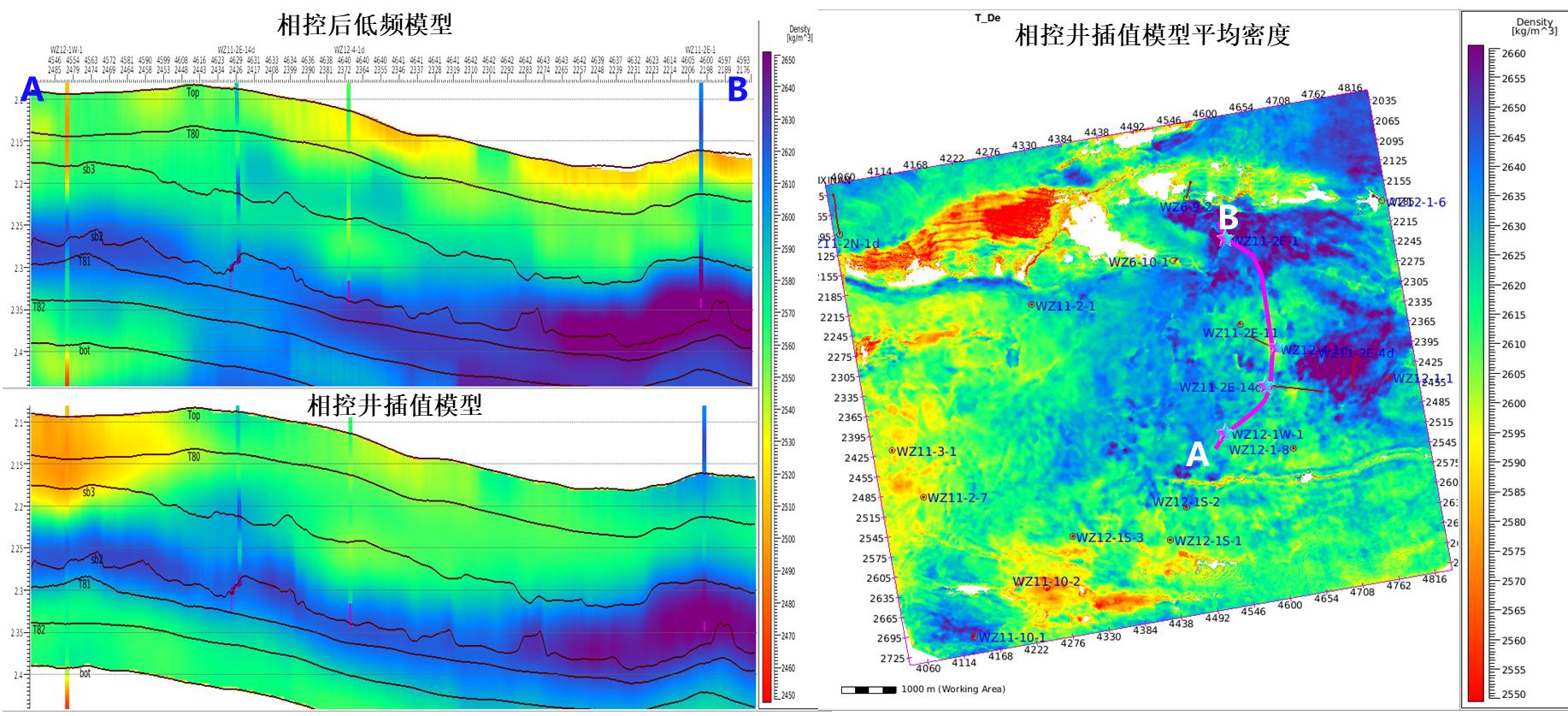Genesis of sub-lacustrine fan and high-precision prediction of high-quality reservoir in 1st section of Liuhua Formation of B Sag in the west of South China Sea
As a productive scientific research project entrusted by CNOOC Zhanjiang Branch, the overall objective of the project is to clarify the genesis and development mode of the sub-lacustrine fan in 1st section of Liuhua Formation of B sag through systematic research from "source" to "sink", and establish an effective technical or methodological system, high-accuracy identification of high-quality reservoirs, precise guidance of drilling deployment, accumulation of theoretical and practical experience for exploration and research in the area of sub-lacustrine fan in Beibuwan Gulf Basin.
Technical route of the project: guided by sequence stratigraphy and deep-water sedimentary theory, using seismic sedimentology method, based on core, drilling and logging, seismic and previous analysis and test data, combined with regional research results, synthetizing well and seismic to establish a regional sequence stratigraphic framework with isochronism, and three-facies combination (core facies, logging facies, seismic facies) to identify the types of sedimentary facies; Based on structural anatomy of the basin, carry out the analysis of different source and sink systems; Divide the genesis of the sublacustrine fan in the area and conduct typical sedimentary units dissection, prepare the plane distribution map of the sedimentary system in each period of the sequence; According to seismic characteristics of reservoir, predict the distribution of favorable reservoir. First, on basis of regional study, establishes high-frequency sequence framework of the sedimentary unit of the sublacustrine fan at seismic scale in key target area; Provide high-quality pre-stack and post-stack seismic data for high-precision reservoir prediction through pre-stack seismic data optimization processing; According to the complex seismic response characteristics of gravity flow reservoir, establish digital seismic facies volume reflecting the characteristics of seismic facies such as geological body shape, internal structure, amplitude, frequency, continuity, and on this basis, a facies-controlled inversion model matching gravity flow deposition is constructed; Predicte reservoir distribution based on petrophysical analysis; Finally combine reservoir prediction results with seismic reflection profile to identify and describe favorable sand bodies.

Technical road map for genesis analysis of sublacustrine fan and high-precision prediction of high-quality reservoirs
Two major innovations
1、The development mode and genetic mechanism of sublacustrine fan in 1st section of Liuhua Formation is clarified, the contribution of provenance system in different directions to sedimentary body of sublacustrine fan in B depression has been confirmed.
(1) Through core observation and description, 8 types of lithofacies and facies combination were identified, including slump deposits, argillaceous clastic flow deposit, sandy clastic flow deposit, high-density turbidite current deposit, low-density turbidite current deposit, gravity flow mixed event layer, flood triggered gravity flow deposition, and metabarite rock with traction current sedimentary structure.

Sedimentary rock types observed by core
(2) There are two types of genesis of sublacustrine fans in 1st section of Liuhua Formation: ① deep water gravity flow triggered by the genesis of intra-basin collapse (represented by WZ11-4N-6), and ② deep water gravity flow triggered by extra-basin flood (represented by Well WZ11-2-4 and Well B sag C1), pinpoint identification marks. Based on this, three types of sublacustrine fan development models are established.

(3) The identification models of logging facies, seismic facies and sedimentary facies of different types of sublacustrine fans have been established, and the comprehensive identification chart of the sublacustrine fan caused by collapse in the basin and the density current sublacustrine fan triggered by flood outside the basin have been established respectively.
(4) Multi-factor comprehensive prediction of the distribution of sublacustrine fan in B depression, the palaeogeomorphology of the study area has a very obvious control over the distribution of sedimentary facies. Therefore, based on the analysis of core facies and logging facies, the palaeogeomorphology, regional large scale seismic facies interpretation and seismic attribute are combined to delineate the distribution range of sedimentary facies using seismic sedimentology technology.

2、Using "digital seismic facies" and digital facies-controlled inversion technology developed by Geotarget, we solved the problem of "rapid lateral change of sublacustrine fan body, strong heterogeneity of reservoir, and difficult prediction of high-quality reservoir".
(1)Pre-stack optimization processing lays a good data foundation
High-quality gathers and stacked data are obtained through near offset multiple suppression, alpha filtering, and moving integral flatten processing technology. The signal-to-noise ratio of pre-stack gathers, the resolution and S/N ratio of stacked data have been significantly improved, and the correlation coefficient of synthetic increased.

(2)Facies-controlled multi-attribute model inversion
Through digital seismic facies technology, under geological constraints, digital seismic facies such as P-wave impedance, P/S velocity ratio and density are constructed, and on this basis, an inversion model matching the sedimentary characteristics of the sublacustrine fan is constructed to finally obtain reliable inversion volume.

(3)Combining core and logging data to establish rock prediction model
According to the types of sedimentary rocks observed by cores, the elastic parameter characteristics of different types of sedimentary rocks are analyzed, and the elastic parameter zones of different types of sedimentary rocks are determined. Using limited core observation data, combined with the elastic parameters of whole well section logging, determine elastic parameter zoning of different lithology and lithofacies, establish the prediction chart.

(4)Layered and zoning prediction
According to the above lithologic zoning and the difference of sedimentary characteristics of each interval, the layered, zoning and two-step prediction method is adopted. Layered: the middle of C2 is the longitudinal control horizon; Zone: gravity flow development area, normal sedimentary area (paleogeomorphic constraints); Two-step prediction: identify effective reservoir according to the intersection of density and P-wave impedance; In the lower section, identify the medium-deep lake mudstone according to the characteristics of low impedance. The identified lithology is divided into four types: gravity flow reservoir, argillaceous gravity flow, low impedance medium-deep lake mudstone, and high impedance shallow lake mudstone. The spatial variation of the prediction results is consistent with the sedimentation law, and the coincidence rate of blind well inspection is more than 85%. The drilling result after acceptance of the project is consistent with prediction.

